Two years ago, we started developing our own platform, based on our knowledge about music recommender systems, to help labels make their artists more visible. Since then, we made significant advancements: you can now use our analytics tools to gain insights into how Spotify's algorithms perceive your music, and use this information to amplify your online presence. We collaborated with both major and independent industry players, including Universal Music Group, Warner Music, Handwritten Records, Tôt ou Tard, Because Music, among others, to fine-tune our tools and data, ensuring they meet the evolving needs of artists and labels alike.
Without further ado, here are the main takeaways about all the things we learned on this journey, from the most obvious to the most advanced:
- Optimize your Profile:
Artists who use platform-specific features are favored. For example, artists with playlist picks on their profiles and Canvas on their songs get more visibility than those who don’t. Spotify wants to highlight quality profiles and guarantee a good user experience. You can use the Health Check feature in our app to quickly identify steps you need to take to improve your profile.

- Creating meaningful listening sessions is critical to your success.
When algorithms try to understand what listeners enjoy, they pay close attention to their listening habits. It means that if you're an artist looking to get noticed, it's beneficial for your music to be played alongside other artists who share a similar fan base. By doing so, algorithms start to recognize patterns and connect your music with the right audience, making it more likely for new listeners who enjoy similar artists to discover your tracks. The platform we developed uncovers these patterns: you can check out which artists you’ve been connected to by algorithms in our app. With that knowledge, you can either lean into it, or course-correct if it’s not the trajectory you like.

- Studying your perception by algorithms gives you very detailed audience insights:
Algorithms learn by studying organic user behavior. This means that if you know how algorithms see you, you know how users see you too. In other words, you can understand what users are doing by studying your perception by algorithms. Simple as it is!
We found in our database that on average, artists get their music heard by about 8 different audience groups (with different artist references, age, music genres, gender, etc.) - even those with modest listeners count. Understanding how an audience specifically reacts to your releases, and targeting the right ones, gets you better engagement and ultimately better discoverability.

- If there’s a discrepancy between your expected and your actual perception by algorithms on Spotify, you end up recommended to people who will never become fans.
I often quote the example of a metal band who produced this one acoustic ballad. That ballad was great and ended up in a big editorial playlist, generating a lot of saves and listenership. However, the band suffered algorithmically. Algorithms learned that their music was adequate for ballad lovers, recommending it to more of them. When that happened, the rest of their catalog - mainly metal - was also recommended to them, and they didn’t like it, causing their algorithmic streams to decrease. It doesn’t mean that they shouldn’t have done this ballad, but in a similar context, be sure to moderate your expectations.
- If your algorithmic classification doesn’t match your profile and catalog, there are ways to shift it.
The smaller the artist, the easier it is to influence! The most impactful strategies to shift algorithmic classification are the following:
- Song aesthetics - we’re in music, after all.
- Artist branding consistent with marketing creatives and targeting. Yes, you read right: the most efficient strategy to influence algorithms is to have a deep understanding of people who love your music and target them with meaningful content. You can check out our Bishop Ivy case study for a detailed example. Using our app, you can start by identifying which are the right audience groups and then use our Audience Builder section to export targeting data (age, gender, countries, cities, artists, Youtube channels, Meta Interests) for your campaigns.
- Playlist strategy. Getting into the right playlists is a great way to generate those meaningful listening sessions. Adjust your playlist pitches to get into the right ones and check out playlist recommendations for relevant audiences in our app. We’ll also get you relevant tracks if you want to use your own playlists to promote your music - coming soon!
- Collaborations - We have a lot to say about this particular topic, so I’ll dive into it in our next piece, stay tuned!
Just like when you try to rank up on Google, the key is to be consistent and persistent across all these levers. Shifting a misaligned profile can take months. Building a fanbase and increasing streams is a marathon, not a sprint. It’s worth the effort, though. For instance, this approach helped Bishop Ivy’s label get 11X Algorithmic Streams for their latest EP.
- Studying algorithmic positioning is a way to evaluate marketing budgets and estimate their impact
If you plan to drop a song with a very different aesthetic than the rest of your catalog, you can expect less algorithmic exposure and less engagement. Remember our metal band example :) Every story is different because it depends on the actual engagement rate of every track in your catalog. Lower algorithmic streams at the beginning is neither a good nor a bad thing. Investing on such a track will be more expensive. In such cases, it’s better if the aesthetic shift is there to last.
To wrap it up, optimizing your presence on Spotify hinges not on accumulating a vast number of streams or achieving surface-level popularity but on strategically engaging with the right audience. This focused approach, emphasizing the importance of targeted playlist placements, quality content creation, savvy use of our algorithmic tools, and genuine community engagement, ensures that your music resonates with listeners most likely to appreciate and support your work. By prioritizing meaningful connections over sheer numbers, artists can foster a dedicated fanbase, enhance their visibility on the platform, and ultimately achieve more impactful and sustainable success on Spotify.















